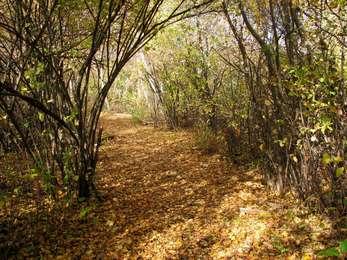Last updated: May 26, 2023
Place
Jamaica Bay Wildlife Refuge

Bicycle - Rack, Information - Ranger/Staff Member Present, Information Kiosk/Bulletin Board, Picnic Table, Recycling, Restroom, Scenic View/Photo Spot, Water - Drinking/Potable, Wheelchair Accessible
Introduction
Jamaica Bay Wildlife Refuge is one of the most important urban wildlife refuges in the United States. Encompassing more than 9,000 acres, it is comprised of diverse habitats including salt marsh, upland field and woods, several fresh and brackish water ponds and an open expanse of bay and islands - all located within the limits of New York City.
Wildlife
From its inception, the refuge has been managed to provide a variety of habitats that accommodate a diversity of wildlife species. Songbirds and small mammals find food, shelter and nest sites in the upland woods and gardens; egrets, herons, ibis and waterfowl utilize salt marshes and ponds. The wildlife refuge is nationally and internationally renowned as a prime birding spot where thousands of water, land and shorebirds stop during migration. More than 325 species have been recorded here during the last 25 years.
West Pond Trail
This wide gravel trails follows the shoreline of the West Pond, giving visitors the opportunity to walk through the diverse habitats of Jamaica Bay. Salt marshes, mudflats, shorelines, and woodlands can all be found along the West Pond Trail. The abundance of wildlife and plants provide a unique experience for nature lovers throughout the year.
Take a minute to observe the Osprey platform. Or stop by the northern-most part of the trail to take in breathtaking views of the Manhattan skyline. For visitors looking for peace and quiet, or perhaps a bit of shade, the North and South Gardens offer a wonderfully serene experience.
In order to enjoy the entire walking trail, plan to spend two hours outdoors.
East Pond Trail
The 117-acre East Pond was created in 1951 to support a variety of plant and animal life. Although the pond appears natural, it is in fact a Robert Moses creation. The manmade pond requires the water level to be manipulated throughout the year to provide mud flats for the surprising number of migrating shorebirds and waterfowl that stop here on their journey along the Atlantic Flyway.
Located across from the Jamaica Bay Wildlife Refuge Visitor Center on the east side of Cross Bay Boulevard, the East Pond demands some preparation for a successful visit. Be sure to wear waterproof walking shoes (or shoes that you won't mind getting muddy and wet). It is also recommended that you bring insect repellent from late Spring through early Fall.
Visitor Center
The Visitor Center building at the Jamaica Bay Wildlife Refuge treads lightly on the earth through sustainable design and the use of environmentally friendly materials and technology. Inside, the lobby floor is a sleek, blonde bamboo - a strong and resilient materials made from a quickly growing type of grass. The counters and shelves are made of sycamore, grown for lumber, and wheat (wheat board). The light-colored paint on the walls brightens the space and is made with low volatile organic compounds.
This building fits into the landscape of the Jamaica Bay Wildlife Refuge through its use of color, design, materials, and technology. To learn more about this environmentally-friendly building, ask a ranger at the front desk for more information.
Other Services
Birding, Nature Walks, Bird Blind, Benches, Parking Lot, Water Fountains, Restrooms
